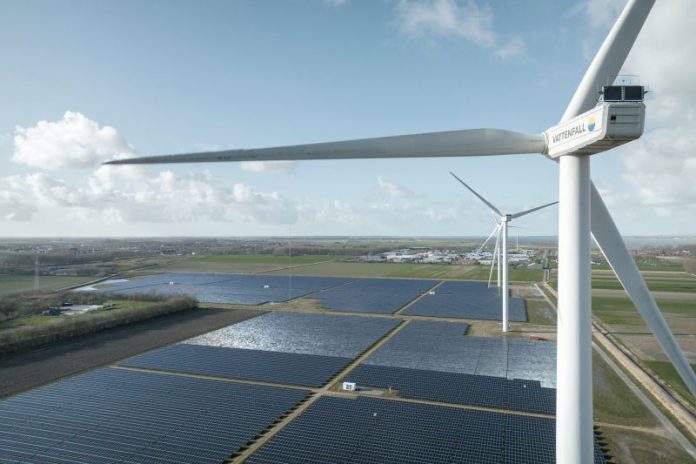Demand for renewable energy is soaring, but limited grid capacity is slowing the widespread green electricity adoption, says Vattenfall Network Solution’s Suzanna Lashford
A key plank of the UK’s decarbonisation strategy is transitioning to an electricity network powered solely by zero carbon, renewable energy. Progress is being made: The National Grid’s electricity system operator (ESO) reported that in 2022 the UK hit a record high of wind and solar generation[1]. But there is one major roadblock that stands in the way of the electric revolution – the limited (and rapidly diminishing) capacity available via the UK power grid.
The non-profit Energy and Climate Intelligence Unit (ECIU) noted that British-based renewables have already overtaken gas as the UK’s primary source of electricity, based on data taken between October 2022 and January 2023[2]. However, following the unprecedented soar in demand for wind and solar farm grid connections, many projects are now being placed on hold. At times when network capacity for renewables was restricted in the financial year of 2022/23, ECIU explains, payments to gas generators reached £485 million – the highest payment to any type of power generator.
Beware of backlogs
The National Grid is warning those looking to secure new connections in England and Wales that they will have to wait in line behind some 600 other projects – collectively compromising of 176GW of energy. This backlog extends more than a decade, with only 64GW of connected capacity available.[3] These limitations are delaying billions of pounds of private investment and at the same time putting the brakes on the UK energy sector, which is not compatible with the UK government’s targets for renewable energy generation. The issue will likely spiral over the next few decades, with the UK’s electricity demand expected to double or even triple by 2050.
The National Grid ESO has publicly acknowledged that the current connection process has ‘not kept pace with the rapid changes occurring in the energy sector’[4], and recognised that the common consensus across the country is that the process is no longer fit for purpose. Distribution Network Operators (DNOs) are currently drawing on new, more flexible approaches to managing their network and enabling connections via curtailment offers, which offer users the opportunity to gain some of their required capacity now and some later, in a bid to release capacity in constrained areas and free up space on the grid. But such changes are not yet guaranteed, and may take years to put in motion.
Breaking the bottleneck
Some developers are in the position where they can afford longer time scales for a grid connection. They may also be offered a connection much further from their facilities, thus increasing the overall cost to the developer. But smaller organisations with less funds at their disposal and those trying to benefit on a local level will struggle with the current procedures available to them. By partnering with an Independent Network Operator (IDNO), or a ‘power partner’, as Lashford describes it, any sized developer can receive support in value engineering their connections and therefore reducing costs, while avoiding bottlenecks.
“IDNOs are a direct, client-facing ‘power partner’, meaning customers do not have to wait in line behind other developers to get our support. They reserve capacity on their partner’s behalf and contribute to the cost of the network by investing in new cables, substations, and upgrades. Vattenfall’s IDNO uses a holistic, collaborative approach to plan the most effective power upgrade strategy for developers, which is tailored to their specific requirements and decarbonisation goals; and we even go one step further to ensure all on-site power is being used as efficiently as possible so that our partners never overpay for what they need.”





The limitations of the National Grid have been known for many years, but Government policies are directed towards investment in what will get their MPs reelected, ie short term. Infrastructure projects like increasing the capacity of the grid doesn’t gain votes, unless there’s a disaster that votes them out.
To put the problem in perspective, the present primary energy demand of the UK was around 2,000 TWh in a year in 2022, while electricity production was only 333 TWh or just 16.7% when by 2050, according to the future energy scenarios (FES) of the National Grid, primary energy demand will fall to around 1,600 TWh by 2050 due to better insulation, more efficient machines and equipment. Some of that primary energy will come from new heat pumps, perhaps 200 TWh, but that still leaves a total primary energy demand of around 1,400 TWh of new electricity generation to be built and operational by 2050 from the present 333 TWh, a big ask when the present National Grid cannot connect the new sources of electric power that are being constructed.
Clearly a large proportion of new electricity generation will have to be connected directly to consumers to bypass the grid.